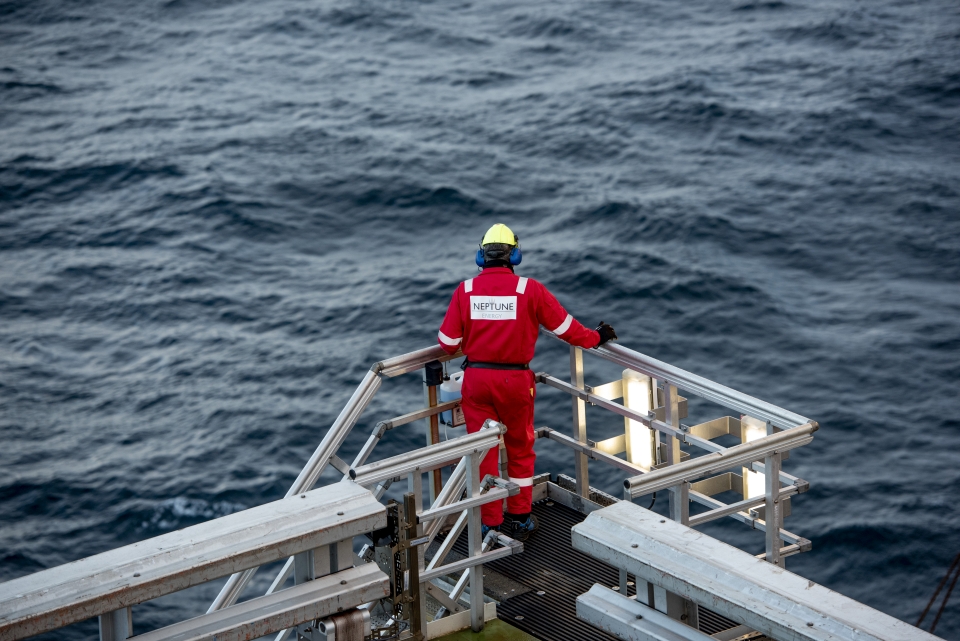CapeOmega and Neptune Energy have revealed NoordKaap, a project concept for a cross-border CO2 transport and storage development that will see CO2 stored in the Dutch North Sea. In addition, together with Sval, Neptune has applied for a CO2 storage licence in the Norwegian North Sea.
NoordKaap would involve transporting CO2 via vessels suitable for directly injecting the CO2 at offshore locations and for terminal offloading. RWE has signed a Letter of Intent with CapeOmega and Neptune Energy in order to assess the possibility to ship green CO2 from their biomass Eemshaven facility for offshore storage in the Dutch North Sea.
The project will examine the potential for a network-based approach to carbon capture and storage (CCS) via marine transport, and could make a crucial contribution to Dutch, Norwegian and European climate and energy goals. The overall objective of NoordKaap is to provide cost-effective, scalable infrastructure solutions to facilitate large-scale, flexible CO2 transport and storage from multiple industrial emitters clusters.
Also read: Neptune, Ørsted and Goal7 want to power energy hubs with offshore wind
CO2 transport by ship
NoordKaap aims to offer CCS solutions to industrial clusters where ship transport is the primary or earliest available export option. The project will also examine opportunities for industrial clusters in Germany, Belgium, Scandinavia and northern France. It would provide access to CO2 subsurface storage sites offshore the Netherlands and Norway. NoordKaap is supported by partners Groningen Seaport, KNCC, Vopak and Return Carbon.
NoordKaap is planned to be operational in 2028.
‘CO2 storage is a crucial component for meeting the EU’s climate goals and for a well-functioning CCS market,’ says Lex de Groot, managing director of Neptune Energy in the Netherlands. ‘Both emitters and storage providers need to be able to transport CO2 safely, and we know access to pipelines will be limited for some, so we are focusing on both types of transport to offshore storage facilities: piping and shipping. CCS also supports Neptune’s strategy to store more carbon than is emitted from our operations and from the oil and gas products we sell by 2030.’
Also read: Neptune Energy finds partners for L10 carbon capture and storage project in the North Sea
CO2 storage licence offshore Norway
At the same time, Sval has applied for a CO2 storage licence in the Norwegian North Sea. Securing the licence would enable Sval and Neptune Energy to proceed with the Trudvang project, which has the potential to store up to nine million tonnes of CO2 per year.
Neptune Energy’s Global Head of Subsurface, New Energy, Pål Haremo, says: ‘Trudvang is a very interesting concept with the potential to store up to 225 million tonnes of CO2 over the next 25 to thirty years. Together with our partners, Sval and Storegga, we have progressed the storage application in record time.’
He adds: ‘The North Sea has great potential as a hub for carbon storage given the availability and proximity of existing infrastructure, depleted reservoirs and saline aquifers. In addition to our CCS projects in Norway, Neptune is working on potential projects in the Netherlands and UK, as we aim to build a portfolio for carbon storage linked to our core areas in the North Sea.’
Trudvang project
The Trudvang project comprises capture of CO2 by multiple industrial emitters in Northern Europe and the UK, shipping of liquid CO2 from export terminals to an onshore receiving terminal in the south-west of Norway and transport via a purpose-built pipeline to the Trudvang location for injection and permanent storage.
The Trudvang storage licence is located in the Norwegian North Sea, to the east of the Sleipner field and about 200 kilometres from the coast. The storage reservoir is at a depth of approximately 850 metres, in the Utsira formation.
Picture by Neptune Energy.
Also read: GCMD plans to study offloading of shipboard captured CO2








